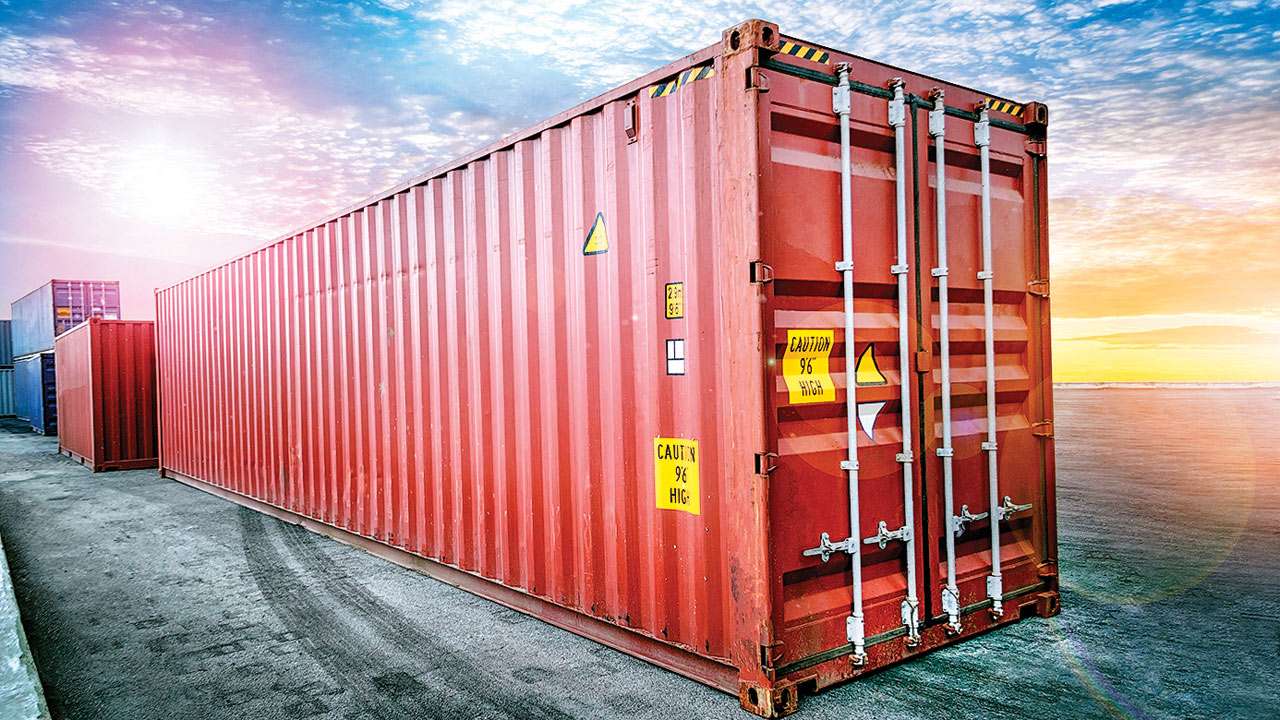
You must have seen trucks on the roads, carrying long, corrugated metal boxes called “containers”. In fact, we routinely refer to these as “container trucks”. All these similar looking boxes are the same size and have some numbering on them — like some sort of a barcode. Their simple design, inexpensive construction and standardisation has changed the face of global trade.
But it was not always this way. Till the 1950s, cargo, which today goes into a container, was packed into boxes, bales, crates, trunks, rolls, barrels and other such packaging. It would obviously take an army of men to load such a cargo onto a ship. Today, a crane can lift a container off the jetty and place it on a ship in a matter of seconds. Imagine that same container existing as five hundred separate boxes! Now imagine thousands of such containers. Hence, huge numbers of men were needed to load and offload cargo from ships, and the amount of time taken was huge. Today, a container ship can offload its entire cargo of around two thousand containers in one single day. In the days before the shipping container, the same amount of cargo would take a month to offload.
Surprisingly, it was the innovative thinking of one single person, Malcolm McLean, that led to this revolution! McLean ran a trucking firm in the United States of America, and the goods he carried would take ages to load onto and off a ship. While at New York one day in 1937, he was exasperated by the days upon days it took to load cargo onto a ship bound for Istanbul, Turkey. It was a problem that pre-occupied his mind for many years afterwards.
After the Second World War, the United States Navy was selling off its surplus stock of supply vessels and other boats which were built for the war. Malcolm McLean purchased an oil tanker named Potrero Hills and converted it into a ship fit for carrying containers. Fifty eight containers containing cargo were loaded onto the ship. These containers were quite different from the ones we see today. They were in fact truck chassis, disconnected from the driver cabin. The little ship sailed from New Jersey in April 1956 and reached Houston six days later. Here, the truck chassis were offloaded, connected to new driver cabins and driven off! In one stroke, McLean had eliminated thousands of men and hours from the logistics calculation! The ship was called the ‘Ideal X’. He set upon a new plan, designing containers that would be able to stack one on top of the other, something that could not be done with truck chassis.
A mechanical engineer named Keith Tantlinger came up with the now familiar self-locking and stackable containers. The ship was, thus, refurbished into a modern, efficient container carrier. This new ship — ‘Gateway City’ — carried over two hundred containers. The savings were astounding as per McLean’s calculations, the cost of loading a ship the old way was around six dollars a tonne (mainly on account of the huge numbers of labourers employed), as compared to just 16 cents by a container! Time savings were radical too.
Strangely, the world was slow to adapt to this change which had drastically reduced both time and costs. Old shipping lines like Holland America and Cunnard, which had loaded little boxes and barrels for over a century did not think much of it. Containers stacked on a ship’s deck could at most be used for short voyages along a coast, for crossing the big bad ocean, the old way was the best way! But in 1966, a container ship called the ‘Fairland’ crossed the Atlantic and heralded the demise of the old general cargo ship.
Another blessing in disguise for container ships was the Vietnam War. McLean put his ships into service, quickly transporting supplies to US troops. The container ships saved time and also prevented pilferage in Vietnam. Within 15 years of sailing from New Jersey to Houston, McLean’s Sea and Land Service had revolutionised global trade.
Soon, there were global standards for how big a container could be — 20 feet or 40 feet? Nothing in between. How high? Can this container from USA sit on top of a container from China? The end result was that any container having cargo could be loaded from any truck and discharged onto another waiting truck five thousand miles away! The economics of it all completely altered the trade. Hardly any costs were now involved in loading and transportation. Countries with cheap labour and manufacturing scored big — think China! The container enabled the costs of buying from the neighbouring country to compete with buying from half way around the globe.
Economies like China, Taiwan, Vietnam boomed as a result of being able to produce cheap goods and be able to export them at little extra cost. New ports, specifically for catering to containers came up, like Tanjung Pelepas in Malaysia and huge container terminals at Singapore. Old ports like Liverpool and New York receded in importance and had to reinvent themselves.
Today, the old ships loading cargo in little parcels have all but disappeared. Also gone are the days of month long port stays. The average ship of old had one lakh little parcels, the largest container ship today carries eighteen thousand containers. Isn’t it a marvelous development!
Writer is author of Brahmaputra — Story of Lachit Borphukan